Owls are some of the most fascinating birds in the world, known for their silent flight, keen hunting skills, and striking appearances. Among them, the largest species stand out not only for their size but also for their unique adaptations to various environments. From dense forests to open tundras, they play important roles in their ecosystems. Each species has its own remarkable characteristics, from powerful talons to exceptional wingspans, making them true masters of the skies. Here’s a look at some of the largest owls found across the globe.
Ural Owl (Strix uralensis)
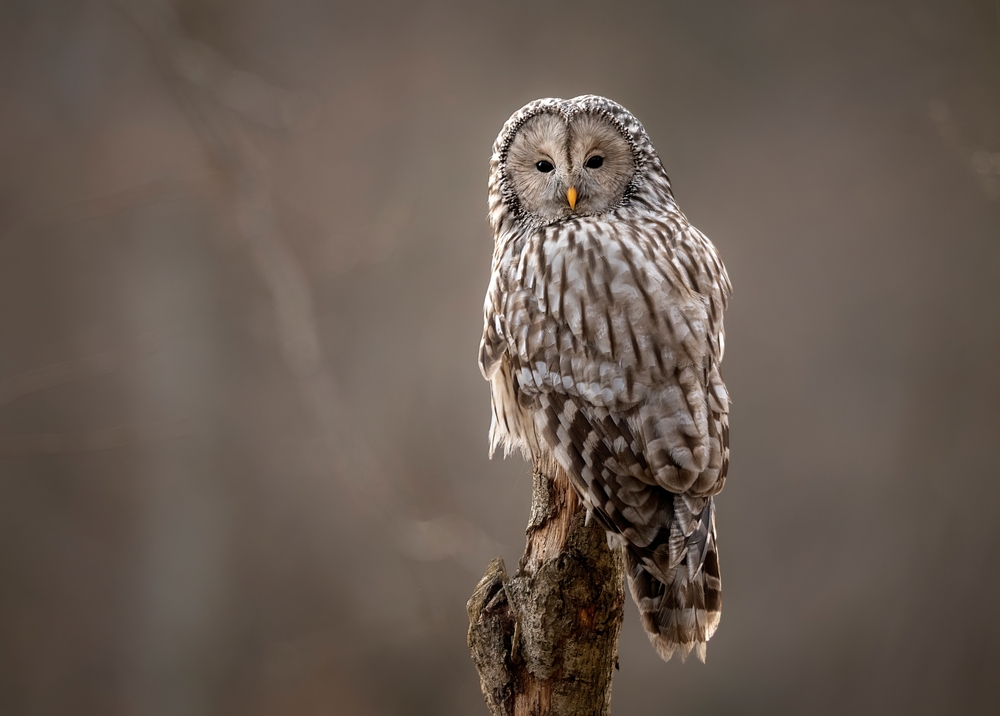
The Ural Owl is a large owl species native to Europe and northern Asia, known for its long tail and rounded head. It stands about 2.2 feet (67 cm) tall, with a wingspan that can reach up to 4.8 feet (1.5 meters). Weighing between 2.2 and 3.3 pounds (1 to 1.5 kg), it has a pale, grayish-brown plumage with dark streaks. They are found in dense forests and woodlands, where they hunt small mammals like voles and mice. They are territorial birds and will aggressively defend their nests, even against human intruders. Their haunting call is a series of deep hoots that can be heard echoing through the forest. Its population is stable, though it faces habitat loss in some areas due to deforestation.
Great Gray Owl (Strix nebulosa)
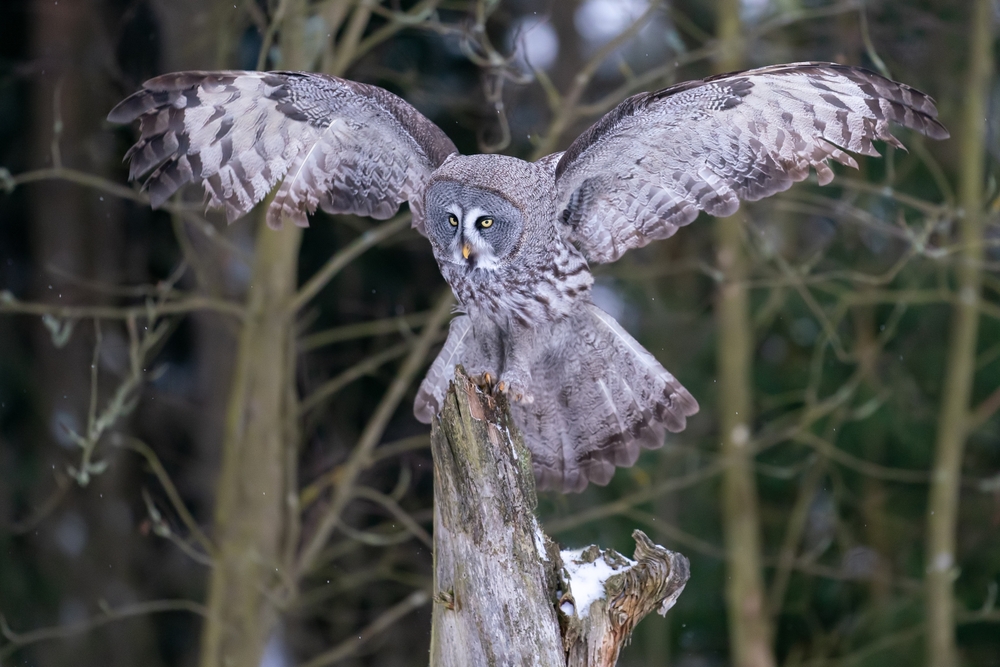
The Great Gray Owl is one of the tallest owls, standing about 2.6 feet (80 cm) in height, though it weighs significantly less than other large owls at 2.2 to 4 pounds (1 to 1.8 kg). Despite its light weight, its wingspan can reach an impressive 5 feet (1.5 meters). Found across North America and parts of Eurasia, it inhabits dense forests and is known for its striking facial disc, which amplifies sound to help locate prey under snow. It mainly feeds on small mammals like voles and pocket gophers. Its gray plumage provides excellent camouflage against the bark of trees, making it difficult for predators and prey to spot. Its nesting habits are unique—it often reuses old nests built by other large birds, like hawks or ravens. This owl is also known for its silent flight, which allows it to swoop down on prey undetected.
Tawny Fish Owl (Ketupa flavipes)
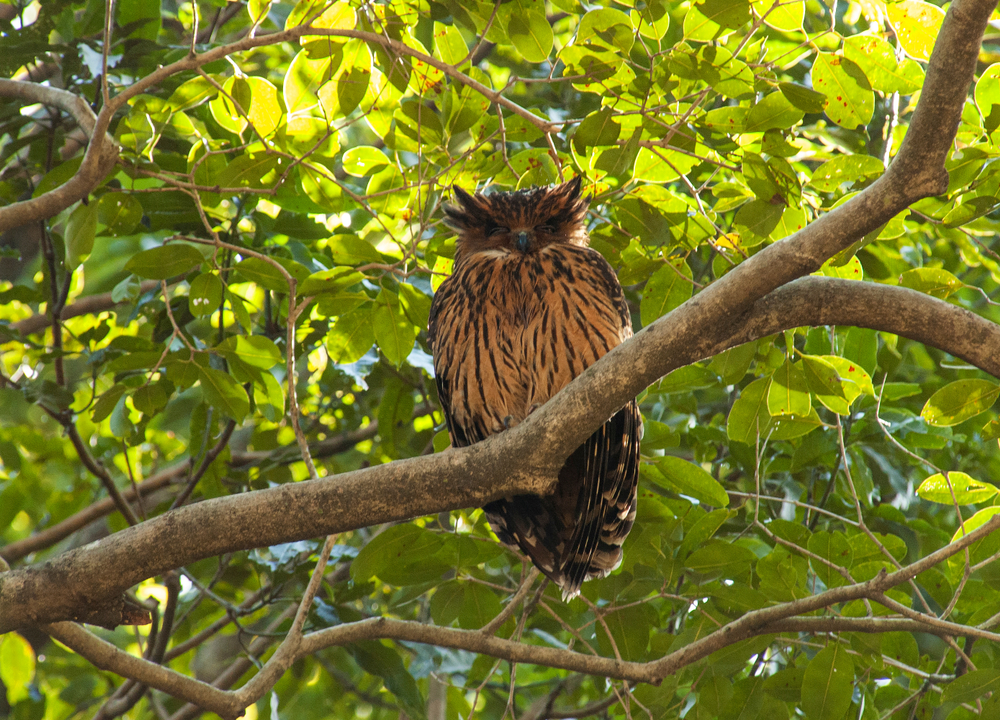
The Tawny Fish Owl, native to parts of South and Southeast Asia, is a formidable predator of aquatic environments. This large owl can weigh between 3.3 and 4.4 pounds (1.5 to 2 kg) and has a wingspan of up to 5.3 feet (1.6 meters). Standing about 2 feet (61 cm) tall, it has a rich tawny brown plumage, which helps it blend into its forested river habitats. Its diet primarily consists of fish, frogs, and other aquatic prey, which it catches by swooping down and snatching them from the water with its powerful talons. It is nocturnal and often roosts in large trees during the day. It has a low, deep call that can carry over long distances. Although not considered globally threatened, its populations are decreasing in some areas due to habitat loss.
Powerful Owl (Ninox strenua)
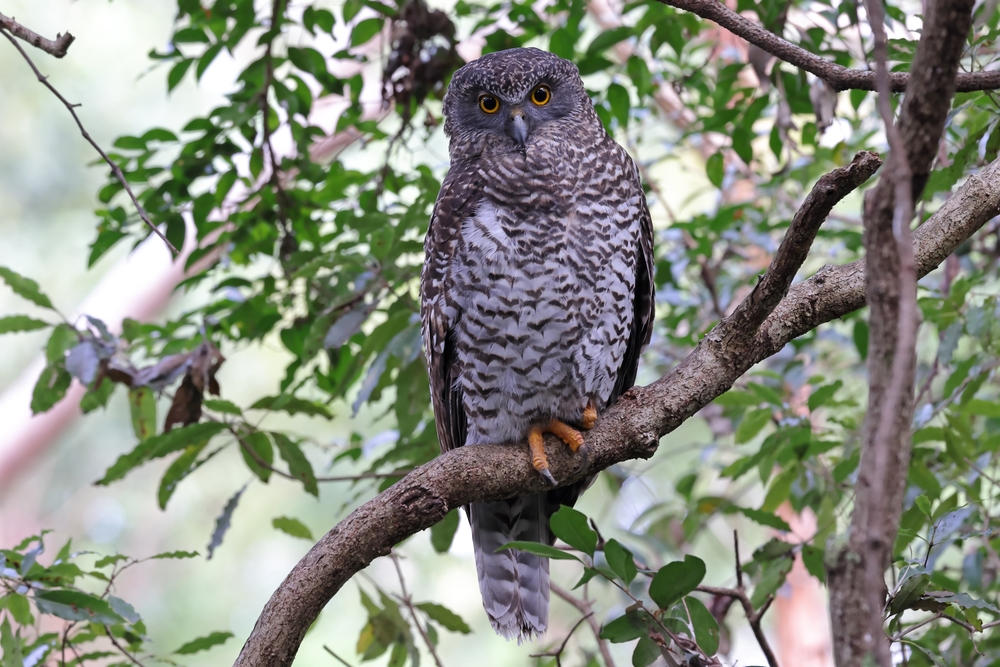
The Powerful Owl, native to eastern and southeastern Australia, is the largest owl species on the continent. Weighing up to 4.4 pounds (2 kg) and standing about 2 feet (60 cm) tall, it has a wingspan of around 4.5 feet (1.4 meters). It is easily identified by its piercing yellow eyes and white, streaked plumage. It prefers dense forests and woodlands, where it hunts arboreal mammals like possums and gliders. Unlike many other owl species, it is highly territorial and mates for life, often using the same nesting sites for several years. Their powerful talons allow them to take down large prey, which they often carry back to a perch to consume. Despite its strength, it is considered vulnerable due to habitat destruction and fragmentation in its native range.
Philippine Eagle-Owl (Bubo philippensis)
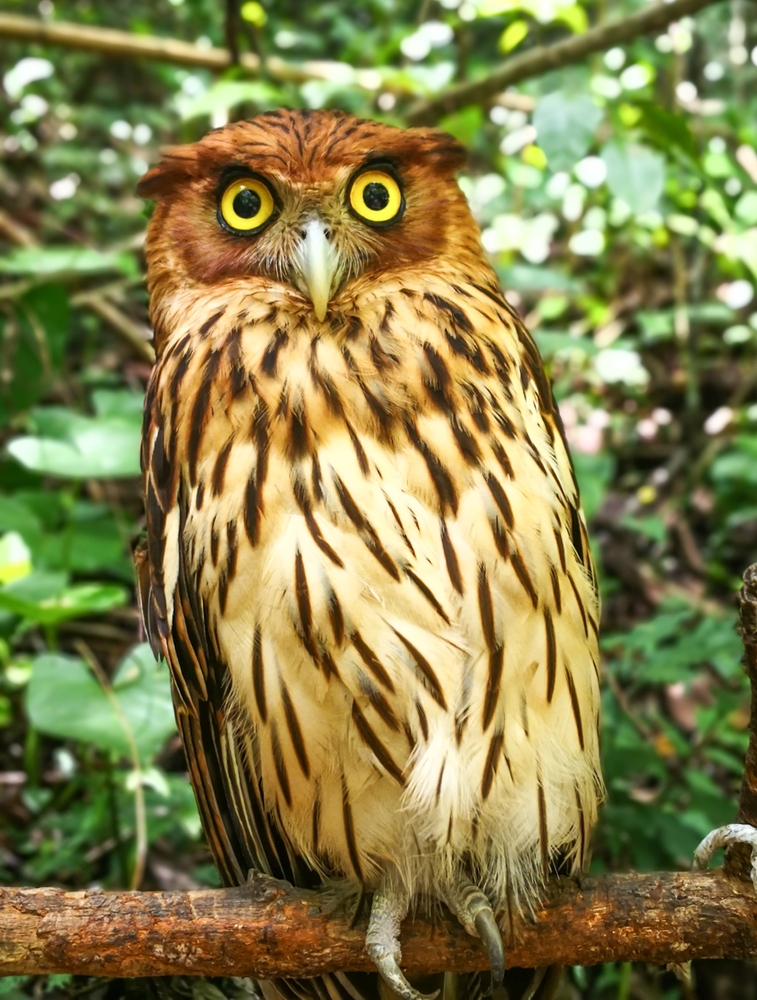
The Philippine Eagle-Owl is the largest owl species in the Philippines, with a wingspan of up to 4.9 feet (1.5 meters). It stands around 2.1 feet (64 cm) tall and can weigh up to 4.4 pounds (2 kg). This elusive bird inhabits lowland forests and is known for its striking, broad ear tufts and bright yellow eyes. Its diet primarily consists of small mammals, reptiles, and birds, including domestic chickens in some areas. It is nocturnal and highly secretive, making it difficult to study in the wild. It is listed as vulnerable due to deforestation and the destruction of its natural habitat. Conservation efforts are ongoing to protect the species, but it remains at risk due to the continued loss of forest cover.
Verreaux’s Eagle-Owl (Bubo lacteus)
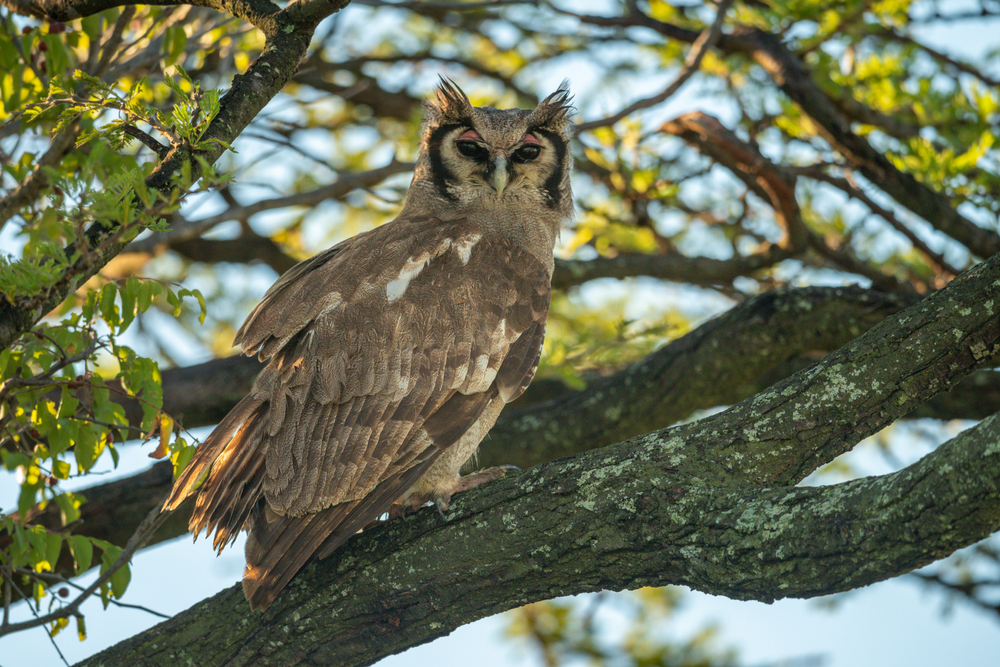
Verreaux’s Eagle-Owl, also known as the Milky Eagle-Owl due to its pale appearance, is one of Africa’s largest owl species. Adults can weigh between 4.4 and 5.5 pounds (2 to 2.5 kg), with a wingspan reaching nearly 6 feet (1.8 meters). They stand about 2.1 feet (64 cm) tall and are characterized by their pink eyelids, which give them a distinct look among owls. Found across sub-Saharan Africa, it inhabits savannas, woodlands, and thorny scrublands. It primarily feeds on mammals like hares and rodents but will also hunt birds, reptiles, and insects. They are nocturnal hunters, known for their deep hooting call, which can be heard over long distances. It is also notable for its ability to take down larger prey like small antelope.
Snowy Owl (Bubo scandiacus)
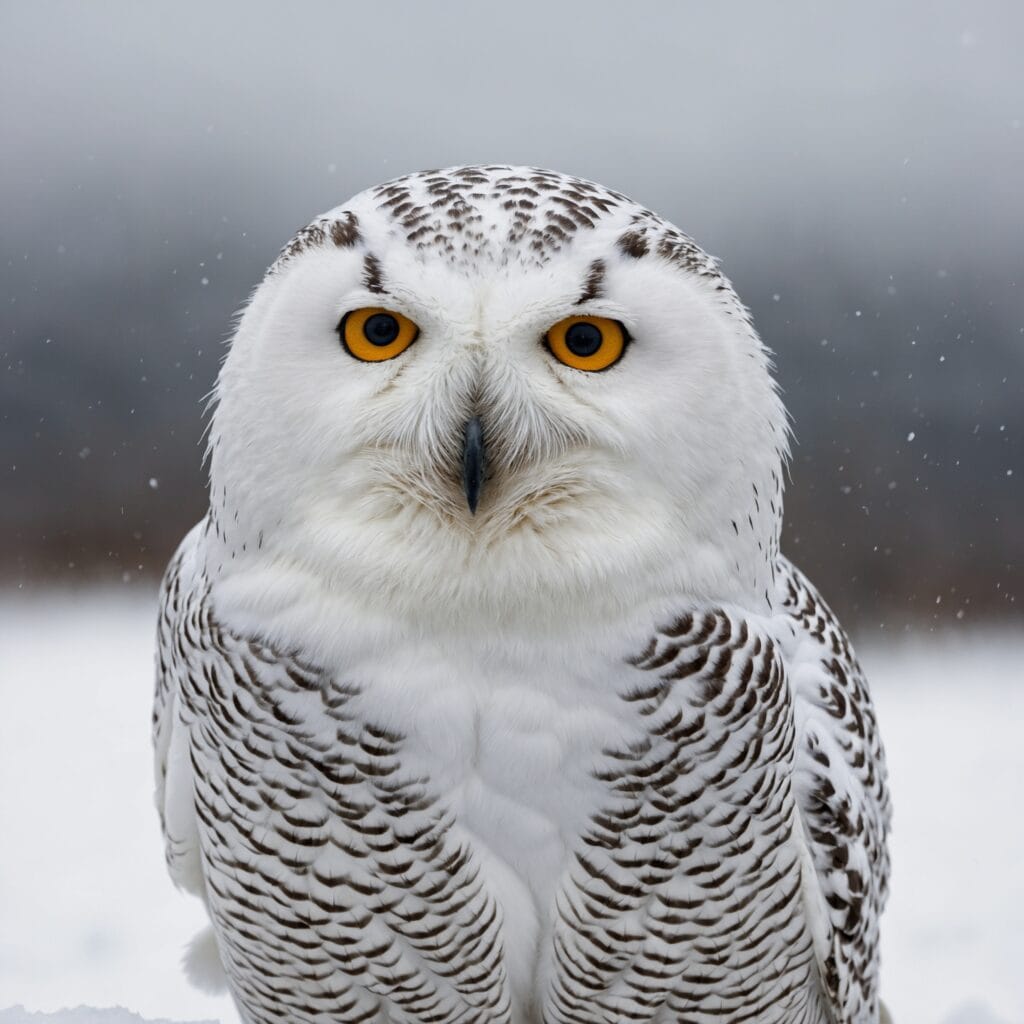
The Snowy Owl, easily recognizable by its striking white plumage, is well adapted to life in the Arctic. Males tend to be almost pure white, while females and juveniles have more dark markings. It can weigh between 3.5 and 6.5 pounds (1.6 to 3 kg) and has a wingspan of up to 5.5 feet (1.7 meters). Standing about 2.1 feet (65 cm) tall, it is a powerful predator, hunting mainly lemmings and other small rodents in the tundra. Unlike most owls, it is diurnal, meaning it hunts during the day, particularly in the continuous daylight of the Arctic summer. Their thick feathers provide insulation against extreme cold, making them perfectly suited to their environment. During winter, some of them migrate south, reaching parts of the United States and Europe.
Eurasian Eagle-Owl (Bubo bubo)
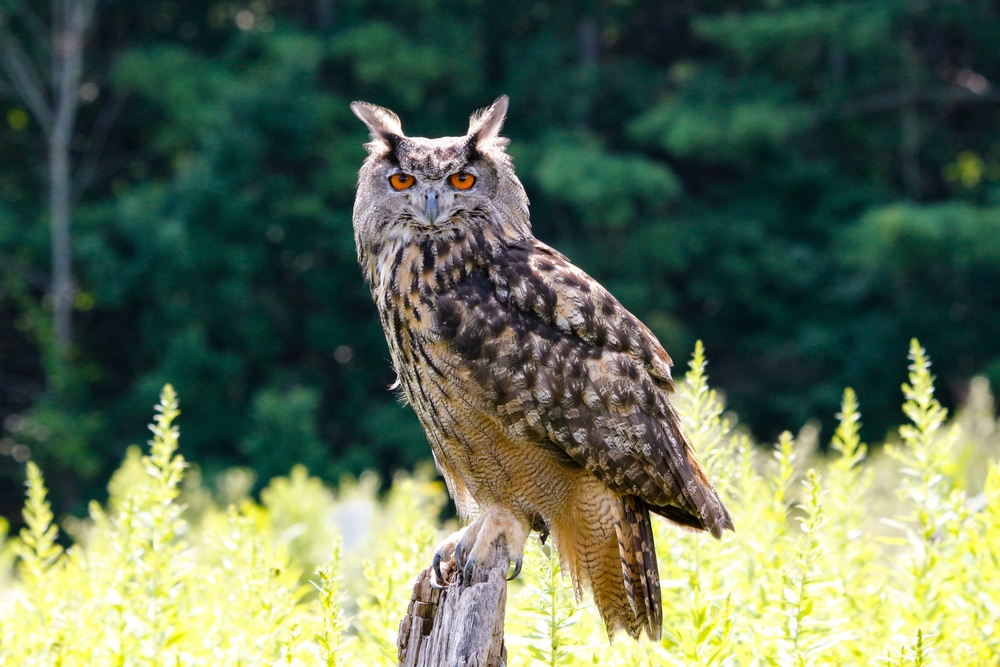
The Eurasian Eagle-Owl is one of the largest owl species in the world, with impressive wingspans reaching up to 6.6 feet (2 meters). Adult males typically weigh between 4.4 to 7.7 pounds (2 to 3.5 kg), while females, which are larger, can weigh up to 10 pounds (4.5 kg). They stand about 2.3 feet (70 cm) tall and are known for their prominent ear tufts and large orange eyes. They inhabit a variety of environments across Europe and Asia, including forests, rocky landscapes, and even semi-deserts. Their diet consists mainly of small mammals, but they are also known to hunt birds, reptiles, and amphibians. With a remarkable ability to adapt to diverse habitats, it is a skilled predator. They have been known to live up to 20 years in the wild, making them resilient survivors. Interestingly, their feathers are designed to muffle the sound of their flight, helping them approach prey silently.
Blakiston’s Fish Owl (Bubo blakistoni)
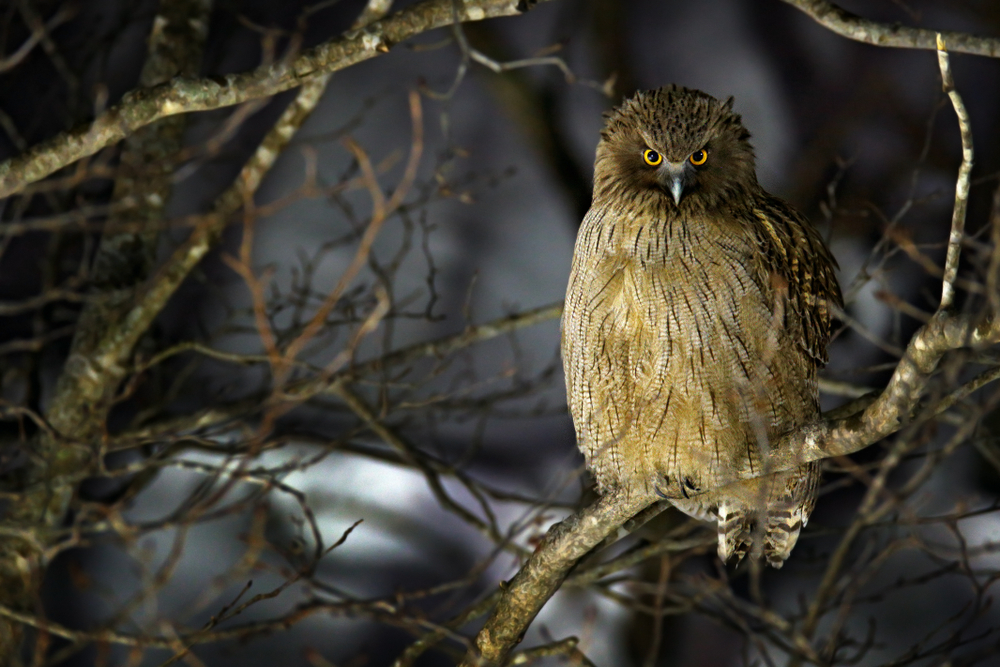
Blakiston’s Fish Owl holds the title for the heaviest owl species, with males weighing between 6.6 to 10.1 pounds (3 to 4.6 kg) and females even larger, up to 10.5 pounds (4.75 kg). They have a wingspan that can extend up to 6.6 feet (2 meters) and can stand up to 2.5 feet (75 cm) tall. Native to parts of Russia, China, and Japan, they are primarily found in dense forests near rivers or streams where they hunt for fish. They are easily recognized by their large, pale yellow eyes and thick, fluffy plumage. They are also solitary creatures, often mating for life, and have been known to defend their hunting territories fiercely. It is critically dependent on healthy river ecosystems for its survival, as fish make up the majority of its diet. The species is currently endangered due to habitat loss and overfishing.
This article originally appeared on Rarest.org.
More from Rarest.org
13 Peculiar Stone Circles and Monoliths from Ancient Cultures

Throughout history, ancient cultures around the world have left behind fascinating remnants of their past in the form of stone circles and monoliths. These massive, carefully arranged stones served as more than mere markers in the landscape—they were tied to complex rituals, astronomical observations, and sometimes burials. Read More.
14 Rare and Endangered Carnivorous Plants You Didn`t Know About

Carnivorous plants are some of the most fascinating species in the plant world, using unique adaptations to trap and digest insects and other small prey. Unfortunately, many of these incredible plants are now rare and endangered due to habitat loss, climate change, and human activities. Read More.
15 Quirky Fashion Trends That Made a Big Comeback

Fashion has a way of coming full circle, with trends from the past often making surprising comebacks. What was once considered quirky or outdated is now embraced as stylish and fresh, showing that even the boldest looks can return with a modern twist. Read More.
